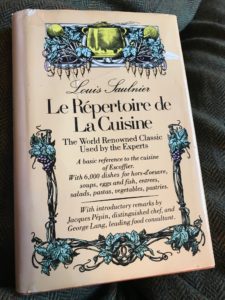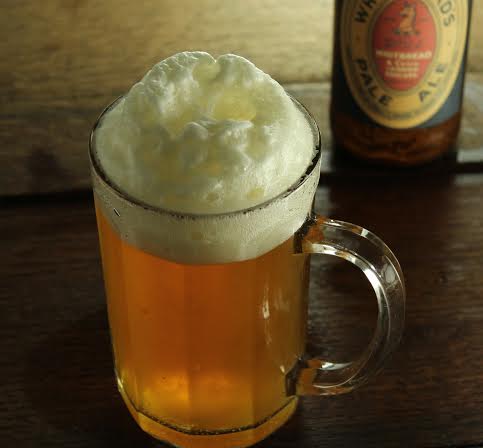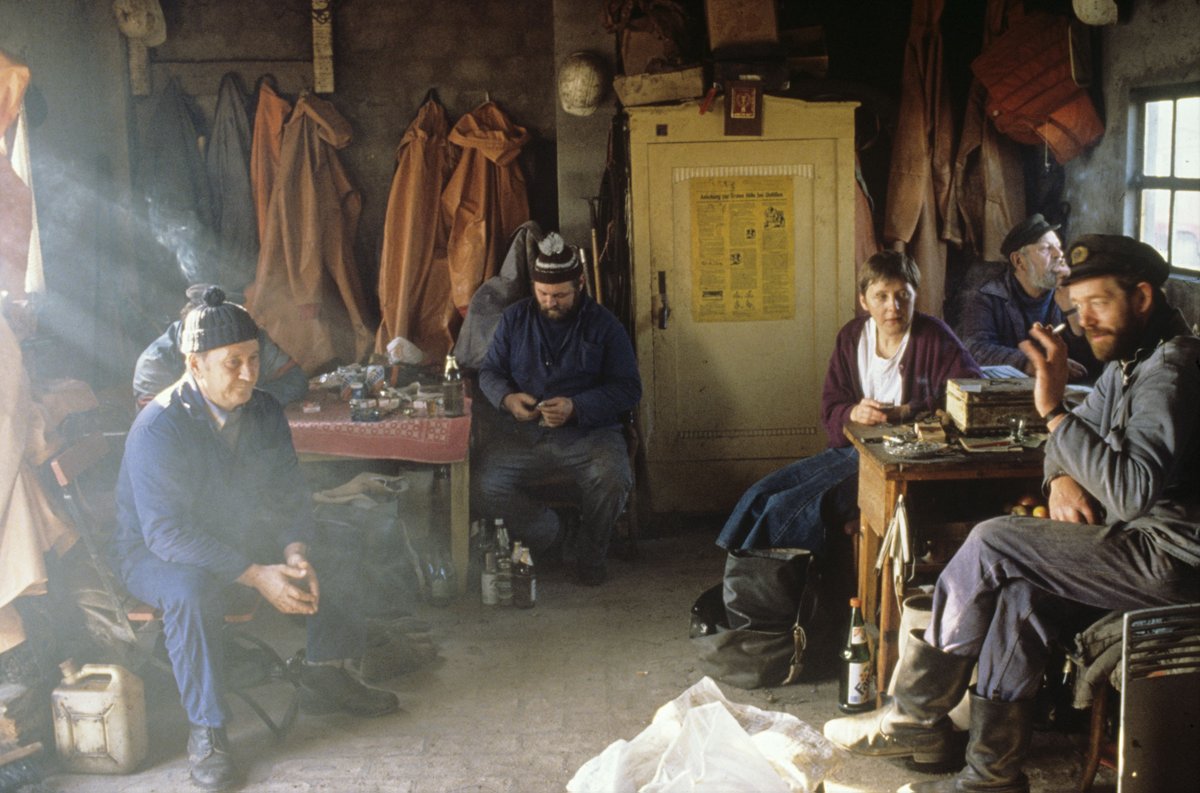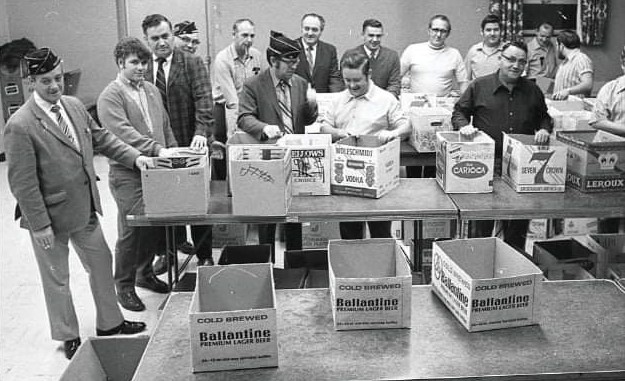 Well, it’s been a bit of a napping sort of time, these last few days. Not much going on. Can find enough to cut and paste enough together to come up with enough beery news notes? Between an increased lockdown and the general Yuletide slowdown, it’s been very quiet. And New Year’s Eve is tomorrow. What to do? What to do? Research canapés and hors d’oeuvres of course! I’ve started my prep and even recommended a resource as shown to your right (Ed.: to my left), a copy of which you can download for free here. Scotch Woodcock is looking interesting. Scrambled eggs with a little anchovy on tiny toast. Yum.
Well, it’s been a bit of a napping sort of time, these last few days. Not much going on. Can find enough to cut and paste enough together to come up with enough beery news notes? Between an increased lockdown and the general Yuletide slowdown, it’s been very quiet. And New Year’s Eve is tomorrow. What to do? What to do? Research canapés and hors d’oeuvres of course! I’ve started my prep and even recommended a resource as shown to your right (Ed.: to my left), a copy of which you can download for free here. Scotch Woodcock is looking interesting. Scrambled eggs with a little anchovy on tiny toast. Yum.
Is there any beery news or other beer writing to report upon? Jeff Alworth wrote one of the most detailed and slightly obsessed year in review posts which is, one the one hand, clearly a bunch of links to stuff he had thought about and written about throughout the year but, on the other hand, obviously a fabulous summary of all the stuff he had thought about and written about throughout the year! Summary of his summary?
It was a transitional year, but also one that never got out of second gear. Things went back to a kind of new normal, but nobody has been very happy about what that looks like.
Yup. But at least he got to do a US National Grand Tour and updated many fine thoughts and observations as a result. Good stuff.*
Also, Gary Gillman* posted the inordinately and perhaps unnecessarily formally titled “Index to Gary Gillman’s Writing on Porter and Stout” which is a fabulous resource. I would say Gary has had his best year of beer writing. His research on Jewish Breweries of Eastern Europe before the Nazis is one of the most remarkable things I have ever read under the guise of beer writing. Just look at his fabulous post “Hops of Galicia, Beer of Lopatyn” published in mid-November and then look at the twenty or more posts he has written in the weeks between then and now. Blogs dead? Nope, you just fell asleep.
And it is wonderful that Katie‘s piece on the modest dinner roll… bun… bap… was the #1 read piece on Pellicle this year. It’s probably the reason I started supporting them on Patreon. It’s the sort of quality writing that keeps me supporting them. Hope she put the old plates of meat up on the old pouf.
In more newsy news, apparently during these summer months in Australia, drinking beer too quickly is a bad thing:
It used to be a famous sight of the Australian cricket summer – former Australian prime minister Bob Hawke skolling a beer during the New Year’s Test at the SCG. But if the late Hawke skolled a beer at the MCG during the recent third Ashes Test, he would have been among many fans to have been ejected from the venue for drinking their alcoholic beverage too quickly. During the three days of Australia’s thrashing of England at the famous Melbourne stadium, countless cricket fans were booted out for skolling their beers.
There. Your beer word for the week: skolling.
Note: the new 2021 BJCP Style Guidelines are out. The beer I am having right now is excellent and breaks the rules. Table Saison by Meuse is only 3%. No one cares. And that $2.43 is a nutty price.
And without further ado… well, perhaps a bit of fanfare… I give you…
My Golden Pints For 2021
Favourite new Ontario beer: I thought this was going to be easy after I tweeted this earlier in the month:
Holy crap! Why has no one screamed at me about Sklepník from @Godspeedbrewery? This is one of the best beers I have ever had. Constrained, bread crust malt, herbal, even creamy. Wow. And “sklep” means shop in Polish so that’s totes cool. Shop beer.
Definitely Skelpnik… but then I had my first Meuse 8 yesterday. So it is a tie. I have not been on side with Jordan’s longstanding claim that this is a golden age for good beer. It is, however, now clearly a golden age for beer in Ontario.
Favourite Old Beery Friend: Peculiar Strong Ale by Granite Brewing. I’ve written about my youthful 1980s in Nova Scotia before, in 2008 for the 15th edition of The Session and again in 2017 when I wrote about a dusty business case study of the Halifax bar scene. for I am not going to be one of those dinkledorfs who will pretend to be able to tell you it does nor does not taste the same but it is very nice to be able to pour a beer that was poured for you around 35 years ago at the time when, in addition to some fine regional breweries and a raft of imports, the Canadian microbrewing scene was taking off.
Best Pub Experience: none.
Best Song About Beer: “Chaise Longue” by Wet Leg. This song is an NPR favourite but what hasn’t been pointed out quite clearly enough is that it is really a song about beer… or at least what goes on that chaise longue:
Hey you, in the front row
Are you coming backstage after the show?
Because I’ve got a chaise longue in my dressing room
And a pack of warm beer that we can consume
Beer song. 100%. Also the best song of 2021 if anyone is asking…
Worst Continuing Trend That Could Just Die: bland samey cartoons with a vaguely positive spin but an underlying tisk of one sort or another – oh and blobby graphics accompanying digital beer ‘zines.
Best Book about Beer: none… bad year for beer books… though if I had access to more modern British Beer I would likely be happy to recommend Modern British Beer by Matthew Curtis* as a useful guide to my options. This illustrates the ups and downs of more localized beer markets – aka more normal beer markets.
Best New Voice: Probably just new to me. David Jesudason in Pellicle with “Desi Style — The History and Significance of England’s Anglo-Asian Pubs” and “On Bat and Trap, and Finding A Sense of Place in Rural England” both articles gave me a window into place and time. I have also obsessed over Bat and Trap coming on 15 years.
Best Trend in Beer: home delivery continues to be wonderful. Right in front of me as I type these words is a door in my basement to a cold room. There are portions of boxes of beer in there from Matron, Godspeed, Meuse, Leftfield and Stone City for present drinking and gift giving to the neighbours. All brought to my house. Half the time for no shipping if you know when and what to order. Fabulous.
Best Beer Blogger: one stands above all year after year – John Duffy of The Beer Nut. Why? Constantly top quality writing by an encyclopedic and independent bon vivant, all offered with both sharp wit and a healthy slice of what I can only call humility. He will maybe laugh at me putting it that way but there is sort of decency and humanity that comes through… even when tearing a strip of something. He truly likes the brewing world and those who work in it. Rarely drops a name but highlights what they offer us all. If anyone sets the tone, it’s your lad, John. Drunk Tand agrees.
Best Imported Beer: The LCBO, our government store, brought in bottles of Timothy Taylor’s Landlord this fall and I like it. I have had it on tap when visiting the fam and I like it just fine in the bottle, too.
Biggest Waste Of Effort: either making or writing about pickle beer.
Best Beer Project: I know that Boak and Bailey awarded this their “Blogger of the Year” award but I think that is too narrow, perhaps a mislabeling. A History of Brussels Beer in 50 Objects by Eoghan Walsh is one of the best projects anyone who thinks at all seriously about beer has tackled in years. It is a book being writing before your eyes on a weekly basis. It is a draft of a TV script for a documentary shown on Belgian TV in 2026.
A final note. Many folk have given up on awarding this year’s beer best awards as part of their general abandonment of good writing about beer. What is up? It does seem like a point of pride with some beer writers that they don’t actually write all that much any more. As Stan got me thinking about this when he wrote his thoughts this week:
I realized as the lists started to roll out in recent weeks that I miss Bryan Roth’s annual effort to add objectivity to subjective choices. I’m too lazy to do something similar, but I did start saving lists a while back with the idea of posting them here in one giant listicle of listicles. Then I came to my senses.
And what is too often written is spun, formulaic or, worse, apologists. “The Five Best Beer Bars in Sarnia.” Lists of beer related presents at holiday time. 40 word beer reviews for throwaway advertising fliers posing as weekly community newspapers. Short, scripted lines for their 37 seconds on TV explaining this beer or that, those 37 seconds before the host laughs unkindly and moves on. It’s sad that this has happened – and frankly a bit embarrassing in a lot of cases – but I figure it’s better to find something else to do like write trade PR if you have nothing much actually interesting to say. Happily there are other far brighter lights to follow and more new voices showing up regularly. I am happy to help you find it… if that is what I am doing on this site.
Oh – and by the way – one more thing… I have created another thing. A Patreon site. Not necessarily to make any money so much as to create a micro site to experiment with. Honestly, I will probably use any money raised to give to others via Patreon. The micro site is getting populated with content as you read this. Well, right around now. Yesterday for sure. I think you can find the Patreon page here. I tried to make it as cheap as I could but $1 a month is not recommended so I went with $3 USD, $4 CND. One price. All in. Stop by or don’t. I won’t judge you. Maureen** is clearly on board.
There. Welcome 2022 and to Hell with you, 2021! Even though it gave us the vaccine roll out and proved once again that humanity can pull its boots up and get things done if it puts its mind to it. OK, 2021 wasn’t so bad. Remember 2020? Now, that one sucked. While you think on that and plan your Friday evening snacks, please please check out the updates from Boak and Bailey mostly every Saturday and from Stan every Monday, plus more with the weekly Beer Ladies Podcast, and at the weekly OCBG Podcast on Tuesday (except when they check out like they have for the last two weeks) and sometimes on a Friday posts at The Fizz as well. There is a monthly sort of round up at The Glass. (Or is that dead now?) There is more from the DaftAboutCraft podcast, too. And the Beervana podcast. And sign up for Katie’s weekly newsletter, The Gulp, too. (That’s a bit now and then now.) And check out the Atlantic Canada Beer Blog‘s weekly roundup. Plus follow the venerable Full Pint podcast. And Fermentation Radio with Emma Inch. The AfroBeerChick podcast as well! And also look at Brewsround and Cabin Fever. And Ben has his own podcast, Beer and Badword (which he may revive some day…) And remember BeerEdge, too, and The Moon Under Water.
*We have never met and neither of us owes the other money.
**TO my horror, when cleaning up and getting masses of paper files out the door and to a professional shredder, I realized I owe Maureen a modest sum for a project I dreamed up years ago that went absolutely nowhere. I found the envelope she sent her cheque in. Post marked Iowa. I am embarrassed. I need to make amends.










